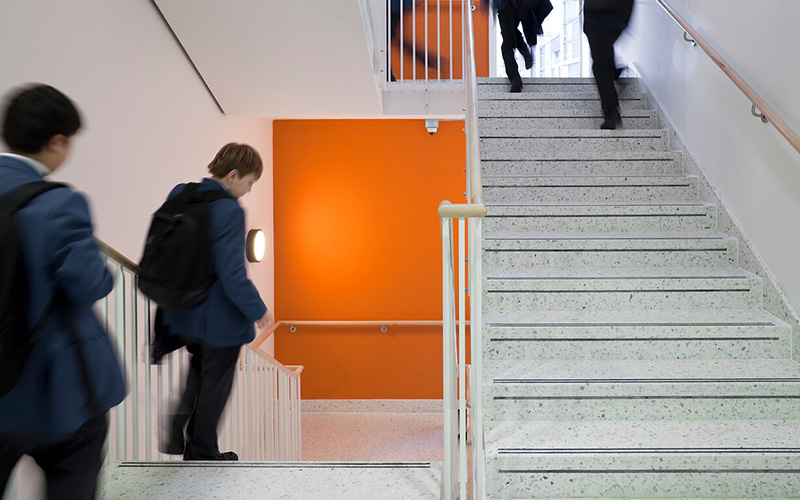The experiences of autistic young people and their parents of lockdown and the reopening of schools
Key messages for policymakers, schools and families.

26 August 2021
This briefing reports on the findings of qualitative research, funded by the British Educational Research Association (BERA) conducted in late 2020 with 17 parents of autistic children and young people (CYP) attending mainstream schools in England, as well as six autistic CYP themselves.
The aim of the research was to generate insight into these parents and children’s lived experiences of the 2020 lockdown, home-schooling, virtual learning and return to school. While much of the broader focus on impacts of lockdown on education has shown the effects on CYP experiencing socio-economic deprivation, this research demonstrates its significant impacts on autistic CYP, who were already at risk of educational exclusion pre-pandemic. The briefing provides evidence to contribute to current debates about how schools move forward in the wake of the pandemic.
Background
Autism is a developmental condition which affects the way people communicate and experience the world around them. Autistic CYP can experience mainstream schools as difficult environments, especially as autism is a hidden disability and mainstream schools are not always fully sensitised nor equipped to respond to autistic students’ needs. Autistic CYP became particularly vulnerable in the pandemic, facing disruption of predictable everyday schooling practices, blurring of home and school, and negotiating upheavals brought by infection control measures as they returned to school.
Key findings
- Lockdown conditions were already deeply familiar for autistic CYP and their parents.
The hallmarks of lockdown, such as restricted social contact and lack of spontaneity were already familiar features of these families’ lives. Many CYP were also already struggling pre-pandemic with access to full educational experiences. Some were missing extensive periods of schooling, some were excluded, while others were being educated in school, but outside the classroom. Some CYP had pre-existing and severe mental health challenges, including anxiety around school attendance.
Parents were already working hard to secure their children’s educational progress. Parents reflected ruefully that, because of the pandemic, others now experienced something of their routine reality.
- Retreating into the private sphere of the home came as a (partial) relief for many participant families, providing respite from their everyday challenges.

Rory (13) was able to enjoy junk modelling
Lockdown provided a release from the work routinely required of parents to negotiate between the child and the public sphere of the school. There was some relief for parents in the suspension of the daily efforts and ‘battles’ they experienced in securing diagnoses and support, as well as ensuring their children’s attendance and progress at school. Autistic CYP also spoke of feelings of safety and comfort of being at home, as they were released from sensory and social challenges of attending school and enjoyed spending time on their special interests.
Parents saw positive changes in their children’s behaviour when they did not have to attend school.
- Parents faced additional responsibilities to assist their children’s access to schoolwork, as they lost vital support from families, support groups and therapies.
Simultaneously, parents experienced a heavy sense of responsibility to mitigate the impacts of missing school on their children’s educational progress. There was little or no adaptation to the materials schools provided to make them accessible for their children.
Parents, though often juggling work themselves, often abandoned the schoolwork sent home and devised their own educational strategies. They lost their usual sources of respite from extended family members and friends and also found many vital services and therapies had stopped.
- Autistic CYP and their parents were keen to return to school, but few parents desired a return to the stressors of school life as it was.
Most autistic CYP were glad to return to school and seemed to benefit from the increased simplicity of COVID-safe schools, for example, breaktimes with smaller groups, fewer big events, reduced school traffic and one-way systems around schools. They desired a return to the structure of the school day, opportunities to see friends and renewing contact with key staff members who helped them. This echoed parents’ appreciation of usually one or two individuals, who ‘got’ their child, and understood how ‘small things’ matter, such as the sensory challenges which children were expected to overcome, or sudden changes in school routines. However, this insight, on the part of a few teachers, was far from widespread or integrated. As such, many parents felt anxious about returning to the familiar stresses of school-life, especially when SEN provisions like nurture rooms remained closed. Few desired a return to ‘business as usual’.
Conclusion
Most autistic CYP were glad to return to school and seemed to benefit from the increased simplicity of COVID-safe schools, for example, breaktimes with smaller groups, fewer big events, reduced school traffic and one-way systems around schools. They desired a return to the structure of the school day, opportunities to see friends and renewing contact with key staff members who helped them. This echoed parents’ appreciation of usually one or two individuals, who ‘got’ their child, and understood how ‘small things’ matter, such as the sensory challenges which children were expected to overcome, or sudden changes in school routines. However, this insight, on the part of a few teachers, was far from widespread or integrated. As such, many parents felt anxious about returning to the familiar stresses of school-life, especially when SEN provisions like nurture rooms remained closed. Few desired a return to ‘business as usual’.
Recommendations
As the government and mainstream schools make plans to recover from the pandemic, there are opportunities to improve provision for autistic CYP’s education in mainstream schools.
- Prioritise pupil wellbeing particularly for autistic CYP as they recover from disruptions and fragmented learning of the past year.
This work would recognise their unique strengths and need for clarity around procedures, connectedness and sensory comfort.
- Recognise the mental health strains caused by mainstream school environments and normative expectations of behaviour for autistic CYP.
Encourage staff to be flexible in expectations of how pupils ‘should’ behave and how schools ‘should’ run, as set out in attendance, uniform and behaviour policies. Have a mental health champion for parents and autistic CYP to discuss reasonable adjustments that match their needs.
- Reconsider what makes a good learning environment for autistic CYP.
This will involve i) quickly reinstating lost support services such as nurture spaces – often seen as dispensable during the pandemic – or providing alternative adapted provision, and ii) incorporating the much-appreciated transparency and simplicity of Covid-safety measures into everyday school provision on a more permanent basis. This can provide clearer, quieter and more predictable environments that would benefit autistic children’s learning.
- Adapt recovery plans for autistic CYP in partnership with CYP and their parents.
Autistic CYP can find being in a school environment stressful, so large holiday playschemes or after-school tutoring programmes requiring additional ‘catch up’ time in schools may not be appropriate.
- In preparing for future emergency schooling, review how tasks can be made accessible for those on the autistic spectrum and with co-occurring conditions (e.g., dyspraxia, dyslexia).
In preparing for future emergency schooling, review how tasks can be made accessible for those on the autistic spectrum and with co-occurring conditions (e.g., dyspraxia, dyslexia).
- Develop a whole-school support strategy.
Rather than seeing autism awareness and acceptance (for example of sensory challenges, impact of changed routines) as the responsibility of one or two staff members who ‘get’ autistic CYP, complete inclusion requires this to extend to a whole-school culture of knowledge for all staff and students.
Image
Top: UCL Digital Media
 Close
Close

